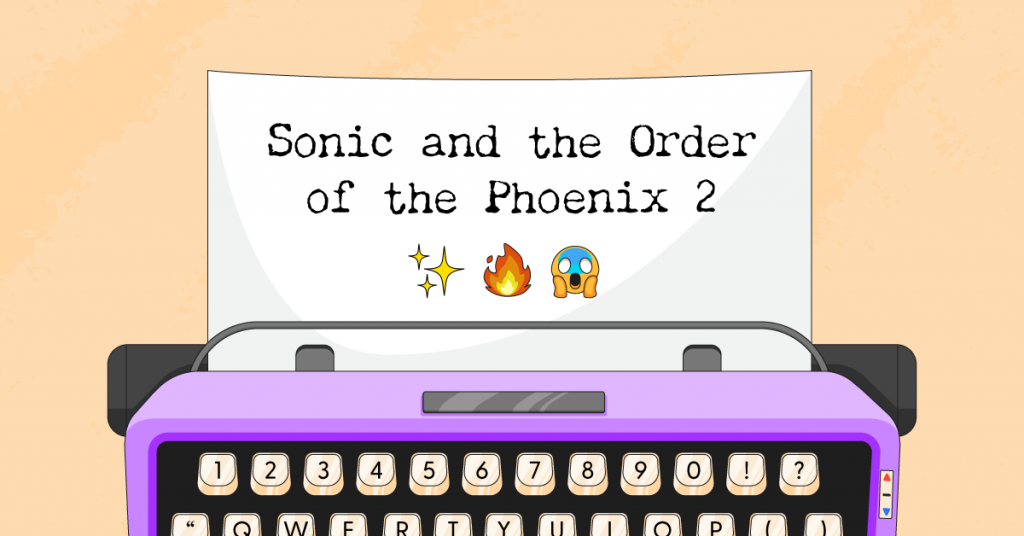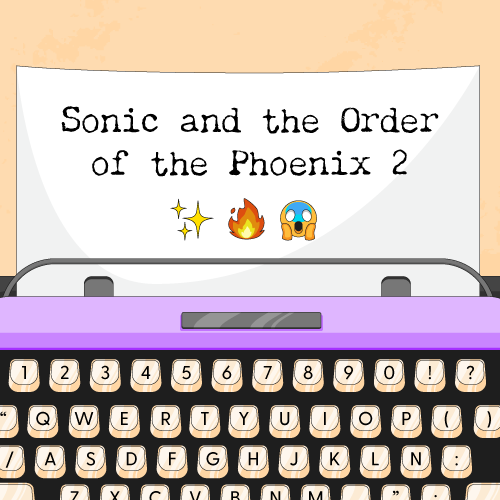
Have you ever wished that there were more episodes of The Office? Or that more novels were set in the world of Harry Potter? If so, you have something in common with people who write fan fiction! Namely, a desire to spend more time with your favorite characters in a setting you love. Fan fiction (also known as fanfic) writers create new worlds and stories based on well-known characters from pop culture. If you’re intrigued, keep reading. We break down everything parents need to know about this literary pastime, including what is fan fiction, popular sites where it’s posted, and potential dangers to watch out for.
What is Fan Fiction?
Any time a devoted fan puts pen to paper (or fingers to keyboard) and uses existing pop-culture characters to create a brand new story, they’re crafting fan fiction. This popular genre has been around since the ‘60s, when excited Star Trek fans, hungry for new content, began writing and sharing stories about fan favorites Captain Kirk and Mr. Spock.
There’s incredible freedom in fan fiction. It can be about anything at all — not just movies or tv shows — including real-life people! Oddly enough, tons of stories revolve around pop singer Harry Styles.
Fanfic can be as short as just a few sentences or as long as an entire novel or series. When it comes to inspiring subject matter, there are definitely some favorites. The most popular fandoms that people write about on FanFiction.net, one of the most popular online fanfic forums, are the following, along with the number of fan fiction stories for each fandom:
Movies:
- Star Wars (56.6K)
- Avengers (50.3K)
- Pirates of the Caribbean (20.5K)
TV shows
- Supernatural (126K)
- Glee (108K)
- Doctor Who (76.2K)
Books:
- Harry Potter (834K)
- Twilight (221K)
- Percy Jackson and the Olympians (79.2K)
Why Write Stories Like These?
In the past, there weren’t streaming sites where you could watch any rerun of The X-Files whenever you wanted. And there wasn’t always a sequel or a franchise reboot coming down the pipeline like there is today. If fans wanted new content, they had to make it themselves — which is why fanfic exists!
Today, people write fanfic for a variety of reasons, but one thing they all share is a desire to spend more time with their favorite characters or in their favorite fictional world. Want to pretend you’re an X-wing pilot with the Rebellion? You can with fan fiction! Ever wondered what would happen if Captain America was actually a bad guy? Go to town!
Fan Fiction Finds the Internet
Thanks to the internet, fanfic has found a home on several popular websites where people can share their stories, get feedback, or simply just read for pleasure. Of course, writers can draft their fanfic privately in a Google Doc, Word document, or even in an email. They may also choose to never share their work at all!
But if they want to publish their stories, though, they’ll often head to devoted sites like FanFiction.net and Archive Of Our Own (also known as AO3). These types of sites are repositories for hundreds of thousands of stories and millions of users. Fan fiction is also very popular on Wattpad and Tumblr, though it’s not the primary focus of either platform.
Benefits of Writing Fanfic
For young people, composing fanfic can be a great way to practice their writing skills. Using existing characters frees a writer up to focus on other aspects of the story, like plot and dialogue. This way, their creativity can really run wild! When a kid is excited about writing, they’re more likely to keep doing it — and this will benefit them in other areas of their life where writing is important (looking at you, 3rd period English class).
Also, when writers share their fan fiction stories online, they can learn firsthand about the feedback and editing process. This can help them to think more critically about their work and how to continuously improve it.
Categories of Writing
While the sky’s the limit when it comes to what a fanfic writer can conjure up with their imagination, there are some common formats that many writers follow. Here are a just few of the more common types:
- Alternative universe — In these stories, the writer imagines a different scenario than reality. Example: What if Hogwarts was actually a school in southern California?
- Fluff/WaFF — These are happy-go-lucky tales with no drama or sadness; WaFF stands for “warm and fuzzy.”
- Hurt/comfort — When a writer imagines two characters sharing a traumatic experience in order to showcase their feelings and how they comfort each other, they’re creating hurt/comfort narratives.
- Self-Insert —This is a classic example of a writer dropping themselves into a fictional world. All of a sudden, they’re the newest member of the Avengers.
- Shipping — Shipping is short for “relationship,” and it means wishing that two people were in a relationship. For fanfic, this means a writer creates and details a love story for two characters who are not together in the actual story (also known as canon).
Watch Out for Inappropriate Content — And There’s a Lot of It
Fanfic isn’t all superheroes and fantastical adventures. A lot of it is devoted to sexual content — and it can be extremely graphic. Think XXX-level content. In fact, the book (and later movie) 50 Shades of Grey originally started out as Twilight fan fiction on FanFiction.net back in 2009. When sexual content involves two men, it’s referred to as “slash” because of the symbol in “m/m.” When it revolves around two women, it’s called “femslash.”
Kids may encounter graphic sexual fanfic stories on a number of different platforms, and they may not be emotionally prepared to handle the content. In addition, these types of stories may glorify predatory or incestual relationships. This can make kids think these types of relationships are okay, when in reality they’re illegal and dangerous. If your kid has gotten into fanfic, we recommend talking about the types of content they may see. Use your family’s values as a guidepost to explain any issues that you want to address.
The Dangers of Community Fan Fiction Platforms
Like with any platform on the internet where people communicate, there’s always a chance that strangers could strike up conversations with kids on fanfic sites like FanFiction.net and AO3. Predators may use flattery and compliments about writing skills as a way into kids’ lives, making them feel special while putting them at ease.
For many fan fiction platforms, users must be 13 or older to get an account. This doesn’t mean that they’re appropriate for all children just because they meet the age requirements. Also, keep in mind that there’s no age-verification process for these sites — setting an older birthday is as easy as selecting “1957” as your birth year and clicking “enter.” Talk with your child about their desire to share and read fanfic as well as your concerns and the dangers involved.
At the end of the day, encouraging your child to write can be a great thing. What is fan fiction, after all, but creative writing with awesome characters that kids already know and love? To help keep them safe while they’re typing away at their latest story, make sure they know they can always come to you if something or someone makes them feel uncomfortable online. In the meantime, encourage their creativity and growing skills as a writer — even if it’s something as off-the-wall as Spiderman donning a hat and trenchcoat and joining forces with Sherlock Holmes!
Read more
Bark helps families manage and protect their children’s digital lives.





